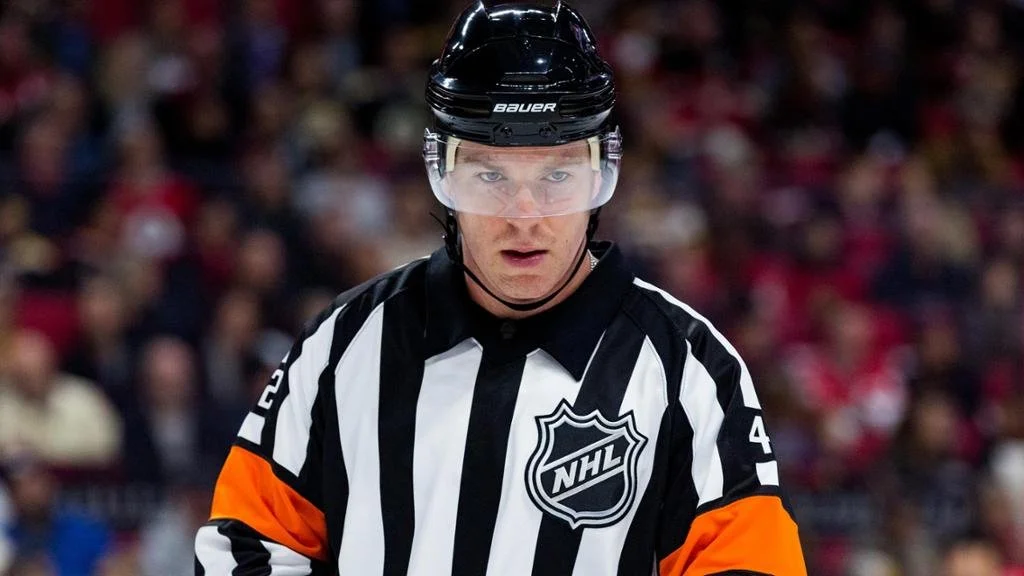NHL: Officiating becomes hot topic as season reaches final stretch
Source: NHL.com
The NHL officiating inconsistencies have increased over the last couple of weeks, leaving fans and teams worried it might affect the outcomes of the season. With just under a month left of the regular season, a bad call could mean making the playoffs or missing them.
It is without surprise that officiating was on the docket at Monday’s GM meeting. Players and general managers have all agreed that the game is extremely fast-paced and has become harder to officiate. The league has also reassured them that every call and non-call is reviewed after the game and could lead to fines or penalties. However, a (no)call cannot be reversed after the game and the outcome will remain the same.
The major issue with reviewing it after the game is that the outcome, whether right or wrong, will remain the same. In the playoff, this could be the difference between winning the Stanley Cup or going home empty-handed.
Some possible solutions were outlined by the league, but it felt like most of the changes would impact the game negatively. One of the solutions was being able to review any play, which would like with VAR in soccer, eliminate human error as much as possible. However, it will ruin the dynamic and flow of the game, as all plays will then be reviewed, and games would last several hours. Another solution was to assess only major penalties, which are the only reviewable penalties, and then assess a minor or major depending on the severity. The issue with this is that a major can only be “downgraded” to a minor, so in a situation where there should’ve been no penalty, the player will still be assessed a 2-min minor
The key takeaway from the GM’s meeting is consistency.
Just last night, Bruin’s enforcer Brad Marchand laid a massive hit on Blue Jacket’s Andrew Peeke, which led to a turnover that was converted for the overtime winner by DeBrusk. The questionable hit violated several of the NHL rules of the game, it could’ve been called for the following infractions: elbowing (2-min minor), boarding (min. 2-min minor), and an illegal hit to the head (5-min major & game misconduct). The dangerous hit violated rule 48.1 which was put in place to protect players against sustaining hits to the head.
Later that night, Tampa enforcer Pat Maroon and Toronto’s Wayne Simmonds were both assessed 10-min misconduct penalties for chirping each other from the bench. Pretty soft if you ask me! More importantly, the reason for the misconduct was “unsportsmanlike conduct” which according to the NHL’s rulebook is defined as “a minor penalty for unsportsmanlike conduct shall be imposed on any player who uses obscene, profane, or abusive language to any person. If this conduct persists, he shall be assessed a misconduct penalty”. The players were not given a minor penalty before receiving the misconduct.
When we look at both those plays, we must agree with Maroon that “This game’s going the wrong way”. The NHL needs a complete overhaul of the officiating system and tackle the issue at the root of the problem. Unfortunately, it is too late for this season, but the focus this off-season should be for the league to transform and raise officiating standards.
A new rulebook needs to be written outlining all possible scenarios and the penalties that arise from each scenario. Too many of the rules and penalties are up for interpretation, and the outcome will solely rely on who is officiating the game. The NHL needs to modify which plays are reviewable or not. The aim is not to review each play, but to make sure that the game is played as it should. Especially when it comes to dangerous or massive hits like the one from Marchand, this needs to be reviewable regardless of whether the hit is clean or not. This is not just for the integrity of the game, but also for the overall safety of the players.
As an example, the Swiss Hockey League’s rulebook for a hit to the head/neck covers the two possible penalty outcomes and outlines 10 situations in which the player would be assessed a penalty. On the other hand, NHL rule 48.1 only talks about 3 situations that do not constitute a hit to the head. The only explanation of what is considered a hit to the head is “A hit resulting in contact with an opponent’s head where the head was the main point of contact and such contact to the head was avoidable is not permitted”.
Now is the time for the NHL to start a major officiating overhaul to protect the integrity of the game and its players.
